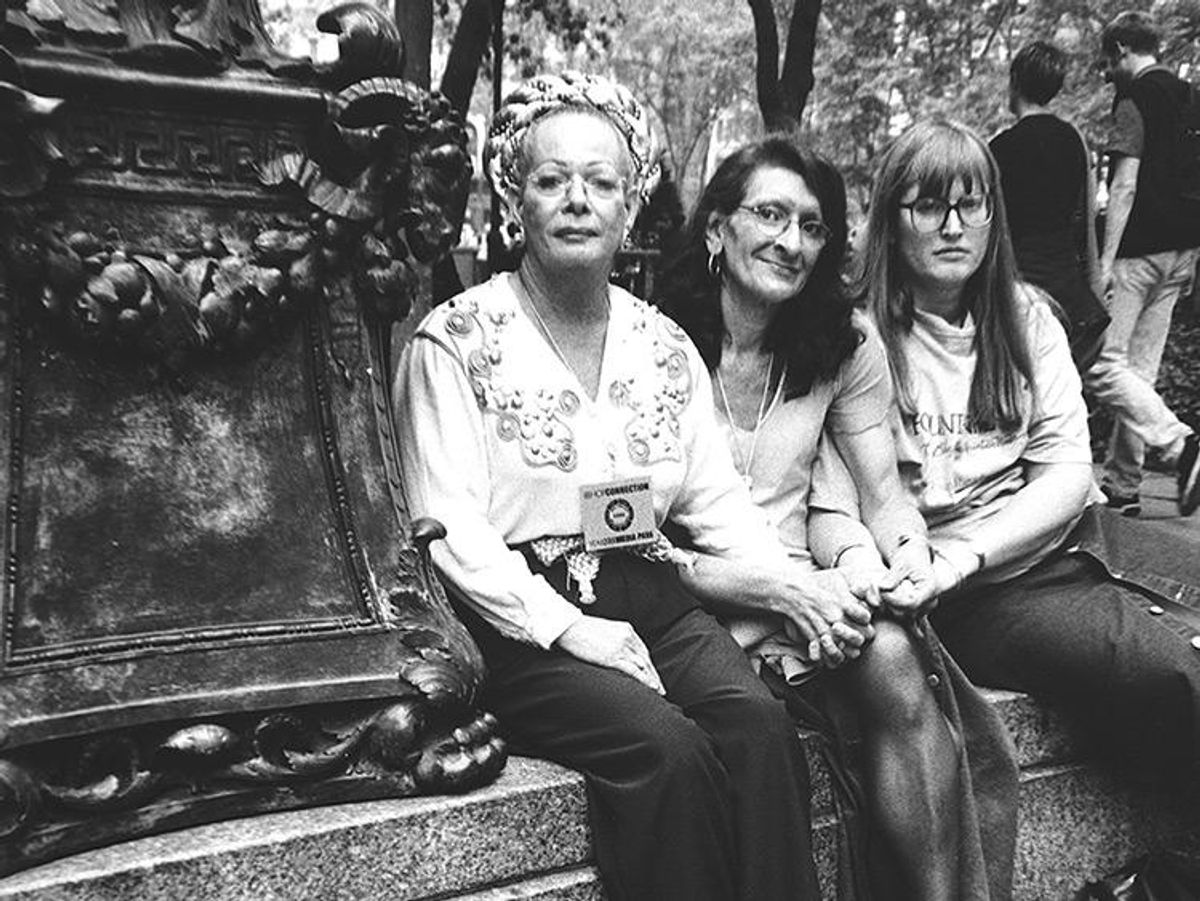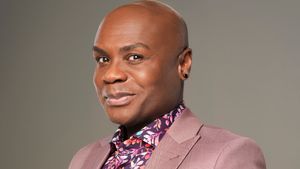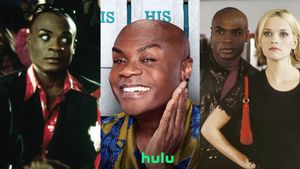The National Portrait Gallery at the Smithsonian Institution got a little more diverse this month, adding its first portrait of a transgender American -- Stonewall participant and pioneering activist Sylvia Rivera.
"At the National Portrait Gallery, we look to include portraits of people who have made a significant impact on American culture," gallery director Kim Sajet told MSNBC. "In the aftermath of the Stonewall riots, Sylvia Rivera expanded the gay liberation movement and fought for equal rights for people who embraced different gender identities."
The portrait, a photo by Luis Carle, went up at the beginning of October as part of the Washington, D.C., gallery's "Struggle for Justice" exhibition, but gallery officials made a public announcement about it just his week. It depicts Rivera and her partner, Julia Murray, and activist Christina Hayworth at the New York City Pride March in 2000. They are seated by a homemade sign reading, "Respect trans people/men!"
"The photograph captures a somewhat atypical scene for Pride Weekend," wrote Ana Perry on the gallery's FaceToFace blog. "Rather than the bustling energy of the parade with crowds and celebration, this captures a moment of tranquil friendship and unity. The three women are shown joined together in the movement to ensure equal protection for the transgender community. As a Latina who spent much of her life homeless, Rivera was particularly sensitive to the struggles of trans people of color and those living in poverty."
Rivera was a key participant in the Stonewall riots. "That's when I saw the world change for me and my people," she told Leslie Feinberg in a 1998 interview for Workers World. She went on to work with the Gay Activists Alliance, but the group eventually outraged her by eliminating transgender issues from its agenda. She and another Stonewall vet, Marsha P. Johnson, founded Street Action Transvestite Revolutionaries, which engaged in a variety of activities, holding protest marches as well as providing shelter for homeless transgender people. At the Millennium March in Italy in 2000, activists proclaimed her the "mother of all gay people."
"In many ways, Sylvia was the Rosa Parks of the modern transgender movement, a term that was not even coined until two decades after Stonewall," Riki Wilchins wrote in The Village Voice upon Rivera's death in 2002.
An organization named for her, the New York City-based Sylvia Rivera Law Project, provides legal assistance and engages in political advocacy aimed at assuring that all people are free to self-determine gender identity and expression, regardless of income or race, and without facing harassment, discrimination, or violence.
"It is extremely fitting that Sylvia Rivera be the first trans activist to appear in the National Portrait Gallery since Sylvia was one of the first out trans activist to stand up for -- and raise her voice for -- trans people in New York City and the U.S," Eric Sawyer, a cofounding member of ACT UP, told MSNBC. "Sylvia emerged from the streets of New York where she was thrown away by her family, and fought back from poverty, homelessness, and drug addiction to be become a powerful voice for the rights, protection, human dignity, and respect for trans people that are the inalienable rights of all people."
Photo: Sylvia Rivera (with Christina Hayworth and Julia Murray) by Luis Carle, gelatin silver print, 2000. National Portrait Gallery, Smithsonian Institution; acquisition made possible through the support of the Latino Initiatives Pool, administered by the Smithsonian Latino Center.













































































